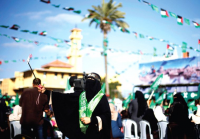
Links
Sheba Medical Centre
Melanie Phillips
Shariah Finance Watch
Australian Islamist Monitor - MultiFaith
West Australian Friends of Israel
Why Israel is at war
Lozowick Blog
NeoZionoid The NeoZionoiZeoN blog
Blank pages of the age
Silent Runnings
Jewish Issues watchdog
Discover more about Israel advocacy
Zionists the creation of Israel
Dissecting the Left
Paula says
Perspectives on Israel - Zionists
Zionism & Israel Information Center
Zionism educational seminars
Christian dhimmitude
Forum on Mideast
Israel Blog - documents terror war against Israelis
Zionism on the web
RECOMMENDED: newsback News discussion community
RSS Feed software from CarP
International law, Arab-Israeli conflict
Think-Israel
The Big Lies
Shmloozing with terrorists
IDF ON YOUTUBE
Israel's contributions to the world
MEMRI
Mark Durie Blog
The latest good news from Israel...new inventions, cures, advances.
support defenders of Israel
The Gaza War 2014
The 2014 Gaza Conflict Factual and Legal Aspects
To get maximum benefit from the ICJS website Register now. Select the topics which interest you.
The hidden picture in Gaza
The IDF has seen Hamas tunnel fighters surrender because they have run out of food. To be sure, this does not mean Hamas is near the breaking point.
Its terrorist army is composed of 15,000 trained members, and Hamas is mobilizing battalions from across Gaza to replace the hundreds of guerrillas killed in combat.
The dominant view in the Israeli defense establishment is that Hamas is managing the war from a position of weakness, which has become more acute in recent days. An audio recording of Hamas’s military wing commander, Muhammad Deif, released on Tuesday, is notable for what it lacked: Gone were previous conditions for a truce, such as the demand to set free terrorists whom Israel released in the Schalit deal and then took back into custody in the West Bank.
How did Hamas reach this point? It launched the current war because of its rapidly deteriorating situation as a regime in Gaza, and growing isolation since the fall of the Muslim Brotherhood in Egypt.
When Egyptian president Mohamed Morsi was toppled in July 2013, Hamas saw its vision of a sea of Muslim Brotherhood states surrounding and threatening Israel shatter. Its goal of creating a unified Islamic state took several steps back.
It went from growth mode to survival mode, and began fast-tracking preparations for a war with Israel to try and end its diplomatic, economic and general isolation.
It prepared cross-border attack tunnels, drones and commando raids, and increased its rocket arsenal, for the day of the big clash, which Hamas assumed would break out this summer.
Indeed, the movement initiated the war by firing hundreds of rockets at Israel and ignoring Israeli truce offers, while seeking to exploit tensions in the West Bank caused by the kidnap and murder of three Israeli teenagers by a Hebron Hamas cell.
The defense establishment became aware several months ago of Hamas’s intention to start a war, when it discovered a maze of cross-border tunnels.
The discovery led to the realization that Hamas was planning to launch a massive terrorist attack on the South and kick off a conflict.
Israel, too, fast-tracked preparations in the months that followed, with the IDF Southern Command and the Shin Bet working closely together to get ready.
Now, the fruits of those preparations are being used every day, and the Shin Bet has dedicated enormous resources to assisting the IDF in its offensive against Hamas, particularly in the systematic destruction of Hamas’s tunnels.
The Shin Bet’s primary mission is to thwart attacks on soldiers inside the Gaza Strip, and its secondary mission is to aid in attacks on Hamas targets. It is broadcasting real-time intelligence to IDF brigade commanders, who are less familiar with Gazan neighborhoods than Shin Bet regional coordinators.
The agency regularly updates the IDF’s command and control system about threats, putting the information “online” for the IDF to see as it maneuvers in Gaza.
In some cases, this has led to army units being ordered to stop seconds before they pass a booby-trapped home that would have been remotely detonated by Hamas members. Soldiers have watched homes blow up, knowing they would have been killed without the last-minute warnings.
Intelligence officials view Hamas’s tunnel city in the Strip as the product of a full-blown industry, hierarchical and organized.
Each Hamas battalion has been assigned its own tunnel, and diggers are seen as members of a profession. In recent months, senior Hamas members have come to meet diggers in the evenings, share a meal with them, and encourage them to carry on.
Despite counter-surveillance measures by Hamas, the Shin Bet has been able to track the progress of many of these tunnels, allowing it to now guide soldiers to shafts in Gaza.
Despite their rhetoric, some senior Hamas leaders are privately asking themselves whether the war they began is worth the price. Cracks have become visible in Hamas’s leadership, which is made up of the military, political and overseas wings. Only when the three reach a consensus does the movement move forward on an issue.
Some Hamas field commanders have also begun being critical of the situation, wary of the anger that is brewing among Gazan civilians.
It remains to be seen whether these developments will push Hamas into seeking a real truce, or whether it will continue on its destructive warpath.
# reads: 248
Original piece is http://www.jpost.com/LandedPages/PrintArticle.aspx?id=369501





















